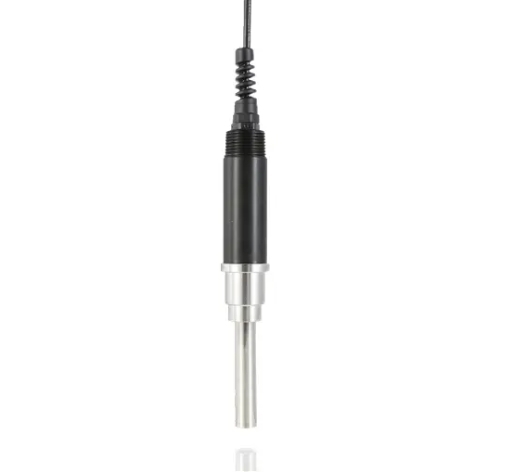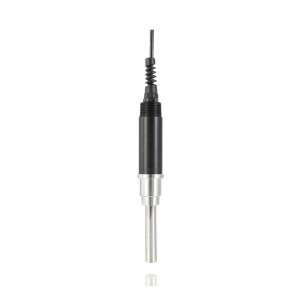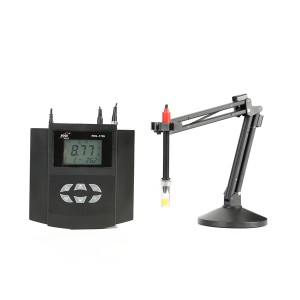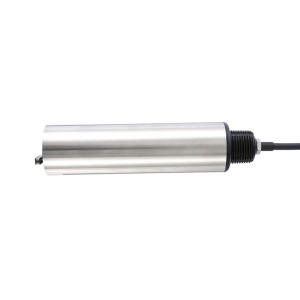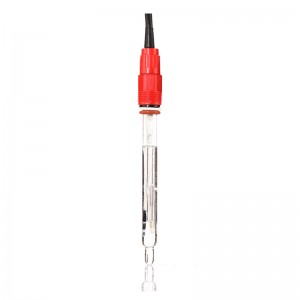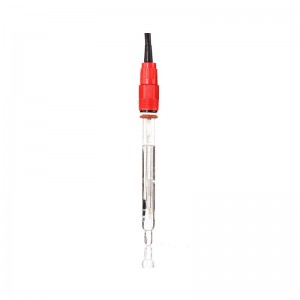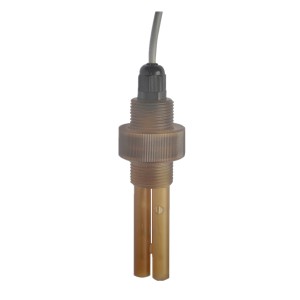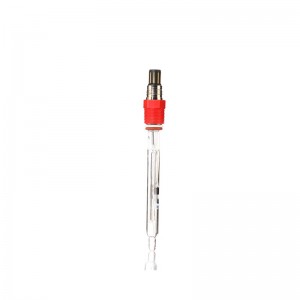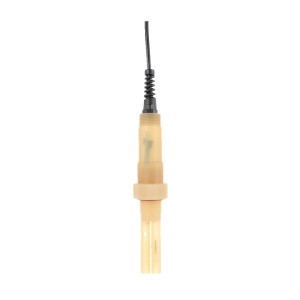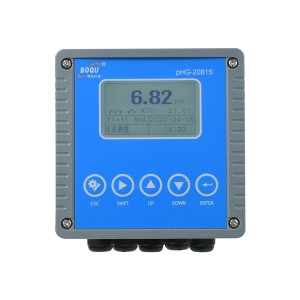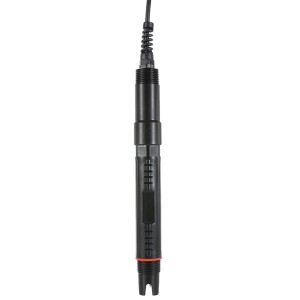The toroidal conductivity sensor is a technology that has emerged in recent years as a standard for industrial process control and water quality monitoring. Their ability to provide reliable results at high precision makes them a favorite among engineers working in these fields. In this blog post, we’ll examine the design and construction of toroidal conductivity sensors, along with their role in various industries.
Toroidal Conductivity Sensor — Measurement Principle: Understanding Electromagnetic Induction
Toroidal conductivity sensors operate based on the principle of electromagnetic induction. To measure the conductivity of a liquid, these sensors utilize two concentric coils. One of these coils carries an alternating electrical current. This primary coil plays a crucial role in generating an alternating magnetic field around it.
As the liquid flows through the sensor’s toroidal design, it passes through this magnetic field. The movement of charged particles within the liquid, such as ions, induces an electrical current in the liquid itself. This induced current is what the sensor measures to determine the liquid’s conductivity.
Toroidal Conductivity Sensor — Toroidal Design: The Heart of Precision
The term “toroidal” refers to the doughnut-shaped design of the sensor. This unique design is at the core of the sensor’s accuracy and efficiency. The sensor consists of a circular, ring-like structure with an empty core through which the liquid flows. This design allows for uniform exposure of the liquid to the electromagnetic field generated by the primary coil.
The toroidal design offers several advantages. It minimizes the risk of fouling or clogging, as there are no sharp corners or edges where particles can accumulate. Furthermore, the toroidal shape ensures a consistent and stable magnetic field, which results in more accurate conductivity measurements.
Toroidal Conductivity Sensor — Electrodes: The Key to Measuring Conductivity
Within the toroidal conductivity sensor, you’ll typically find two pairs of electrodes: primary and secondary. As mentioned earlier, the primary coil generates an alternating magnetic field. The secondary coil, on the other hand, serves as the receiver and measures the induced voltage in the liquid.
The induced voltage is directly proportional to the liquid’s conductivity. Through precise calibration and sophisticated electronics, the sensor converts this voltage into a conductivity measurement, providing valuable data for process control or water quality analysis.
Toroidal Conductivity Sensor — Inductive Coupling: Unveiling the Core Technology
At the heart of toroidal conductivity sensor lies the principle of inductive coupling. When these sensors are immersed in a conductive liquid, something fascinating happens. The primary coil within the sensor generates a magnetic field. This magnetic field, in turn, induces electrical currents in the liquid, owing to its inherent conductivity. Think of it as a dance between magnetism and electrical conductivity.
As the induced currents circulate within the liquid, they create a secondary electromagnetic field, like ripples spreading across a pond after a pebble is dropped. This secondary electromagnetic field holds the key to measuring the conductivity of the liquid. In essence, toroidal sensors harness the magic of electromagnetic induction to unlock vital information about a solution’s electrical properties.
Toroidal Conductivity Sensor — Measuring Voltage: The Quantitative Aspect
So, how does a toroidal conductivity sensor quantify the conductivity of a liquid? This is where the secondary coil comes into play. Positioned strategically, the secondary coil measures the voltage resulting from the secondary electromagnetic field. The magnitude of this voltage is directly proportional to the conductivity of the liquid. In simpler terms, more conductive solutions induce a higher voltage, while less conductive ones generate a lower voltage.
This straightforward relationship between voltage and conductivity provides a precise means of quantifying the electrical characteristics of a liquid. It allows operators and researchers to obtain accurate data for a wide range of applications, from monitoring water quality in wastewater treatment plants to assessing the salinity of seawater in marine research.
Toroidal Conductivity Sensor — Temperature Compensation: Ensuring Accuracy
While toroidal conductivity sensors offer unparalleled accuracy in measuring conductivity, there’s one crucial factor that must be considered: temperature. Conductivity is highly temperature-sensitive, meaning that its value can fluctuate with changes in temperature. To address this challenge, toroidal conductivity sensors are often equipped with temperature compensation mechanisms.
These mechanisms ensure that the readings provided by the sensor are corrected based on the temperature of the solution being measured. By doing so, toroidal sensors maintain their accuracy even in environments where temperature variations are significant. This feature is particularly crucial in applications where precise measurements are paramount, such as pharmaceutical manufacturing and chemical process control.
Toroidal Conductivity Sensor — Calibration: Ensuring Accuracy
Like most analytical instruments, toroidal conductivity sensors require periodic calibration to maintain accuracy. Calibration involves verifying the sensor’s readings using standard solutions of known conductivity. This process helps ensure that the sensor continues to provide precise measurements over time.
Calibration is typically performed using solutions with a wide range of conductivity values, covering the expected operating range of the sensor. By comparing the sensor’s readings to the known values of the calibration solutions, any deviations or drift in measurements can be identified and corrected. This critical step is essential for guaranteeing the reliability of the data collected by the sensor.
Toroidal Conductivity Sensor — Materials Compatibility: The Key to Longevity
Toroidal conductivity sensors are designed to come into direct contact with liquids, which can vary widely in composition and corrosiveness. Therefore, these sensors are typically constructed from materials that are compatible with a broad range of liquids. The materials must resist corrosion and contamination to ensure reliable measurements and the longevity of the sensor.
Common materials used in toroidal conductivity sensors include stainless steel, titanium, and various types of plastics. The choice of materials depends on the specific application and the compatibility of the sensor with the liquid being measured. This careful selection of materials ensures that the sensor remains robust even in challenging environments.
Toroidal Conductivity Sensor Manufacturer: Shanghai BOQU Instrument Co., Ltd.
When it comes to toroidal conductivity sensors, one manufacturer that stands out for its quality and innovation is Shanghai BOQU Instrument Co., Ltd. With a rich history in producing precision measurement instruments, BOQU has gained a reputation for excellence in the field.
BOQU’s toroidal conductivity sensors are designed to meet the diverse needs of industries such as wastewater treatment, chemical processing, and pharmaceuticals. Their sensors are known for their robust construction, reliable performance, and ease of integration into existing systems.
Conclusion
Toroidal conductivity sensor is a testament to the marvels of modern measurement technology. Their utilization of electromagnetic induction, toroidal design, and carefully engineered electrodes make them indispensable tools for industries where accurate conductivity measurements are essential. With manufacturers like Shanghai BOQU Instrument Co., Ltd. leading the way, we can expect continued advancements in this critical field, enabling us to monitor and control processes with even greater precision and reliability.
Post time: Sep-22-2023

